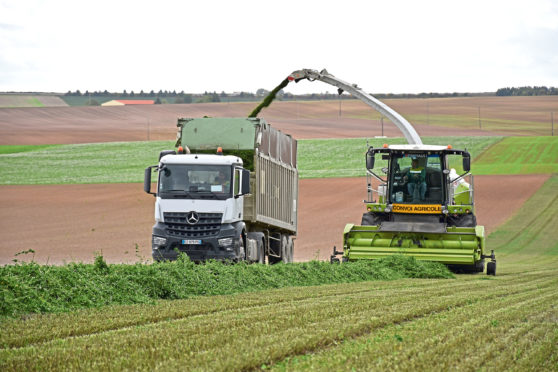Recent drought conditions in France have forced many farmers to grow alfalfa as an alternative forage to grass but the benefits of the crop, particularly for dairy farms, are widespread. Chris McCullough finds out more
Approximately 10,000 French farmers grow alfalfa for themselves or various drying plants operated by co-operatives.
In a good year up to four cuts can be taken annually with a yield of 5.7 tonnes per acre from the first cut.
One of the main advantages of alfalfa is that it contains 2,400kg of protein per hectare, compared to 1,000-1,500kg per hectare for soya. The crop gains its high content of nutrients and vitamins due to a root system that can extend to more than 20 feet deep.
Managing the crop uses very few herbicides and in France around 7% of the crop is farmed organically.
Alfalfa is normally dried after harvesting to produce high-quality bales or pellets for livestock. When the crop is harvested the moisture content is around 65% so it is then sent to dehydration plants to be dried to around 10% humidity before being crushed to be made into pellets or sent uncrushed for baling.
One of the processing plants that dries alfalfa is based in St Remy, east of Paris, and is owned by the Luzeal Co-op Group.
Luzeal was the first French dehydration co-operative to be formed and it harvests 35% of the national production of dried alfalfa. It has five production sites and processes more than 51,000 acres of alfalfa produced by its 1,850 members. A total of 400,000 tonnes of dried product is produced by Luzeal including 140,000 tonnes of alfalfa pellets.
“There are a number of benefits in growing alfalfa in terms of the crop’s protein content and environmental advantages,” said Luzeal president, Eric Masset.
“We can successfully grow alfalfa for three consecutive years on the same land before the yields start to decrease.”
Explaining how alfalfa works on his 500-acre farm, Mr Masset said: “We harvested each cut after 45 days of growth. When the alfalfa is dried it can sell for 170 euros (£145) per tonne for the pellets and 190 euros (£162) per tonne for the bales which weigh around 380-440kg each.”
Luzeal exports around 60-70% of the bales it produces to the Benelux countries, Switzerland, Germany and into Saudi Arabia.
French farmers growing alfalfa receive a subsidy of around 10 euros (£8.50) per tonne.
“The future for growing alfalfa in France is very good,” said Mr Masset.
“Over half the proteins required by livestock farmers in France are grown in France and alfalfa is a key component of that overall production. As we saw this year with changing climates and a long drought period alfalfa was a vital crop to produce forage for not only French farmers, but those further afield also affected by dry or drought conditions.
“There is obviously a big demand for alfalfa from dairy farmers due to the high nutrient value of the crop. However, there is a growing demand for alfalfa to feed to horses as well. Alfalfa pellets are less dusty and are suitable for older horses that have problems with their teeth because the pellets require less chewing than hay.”
